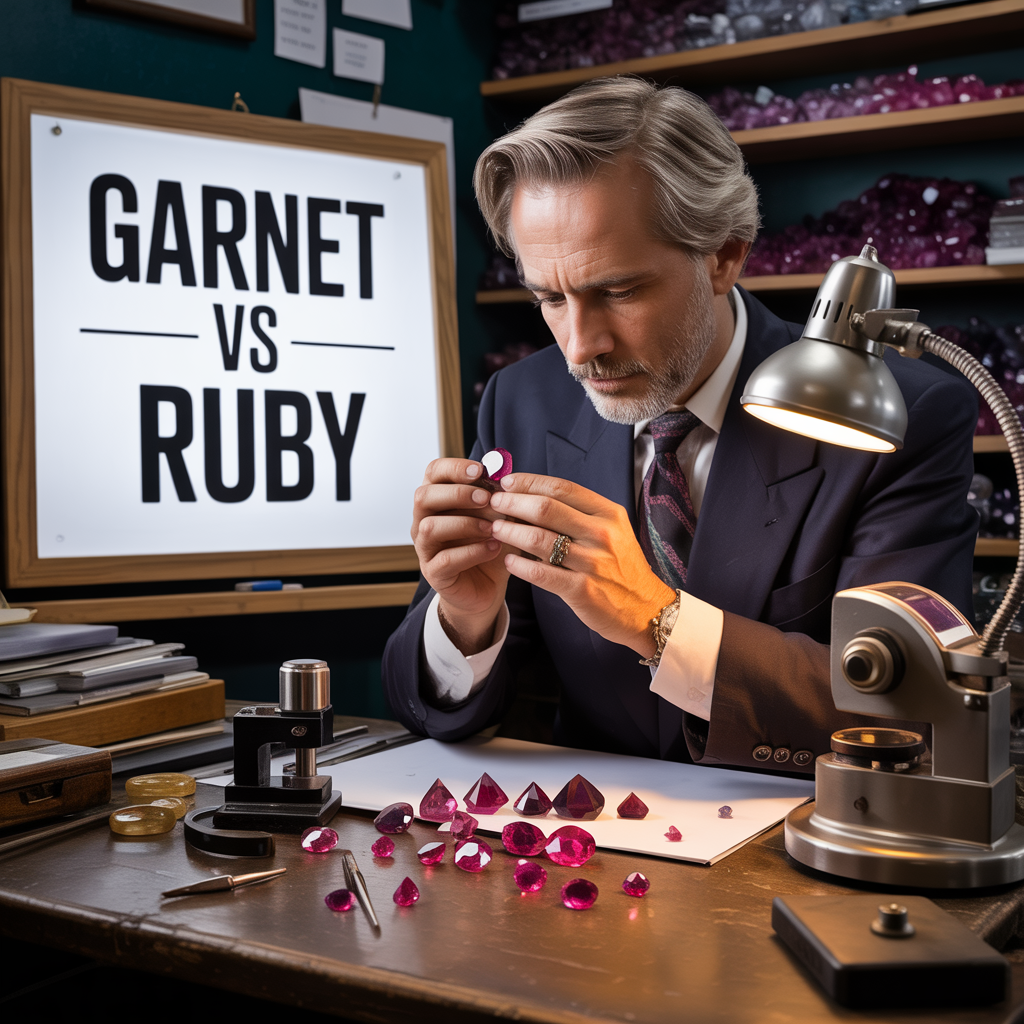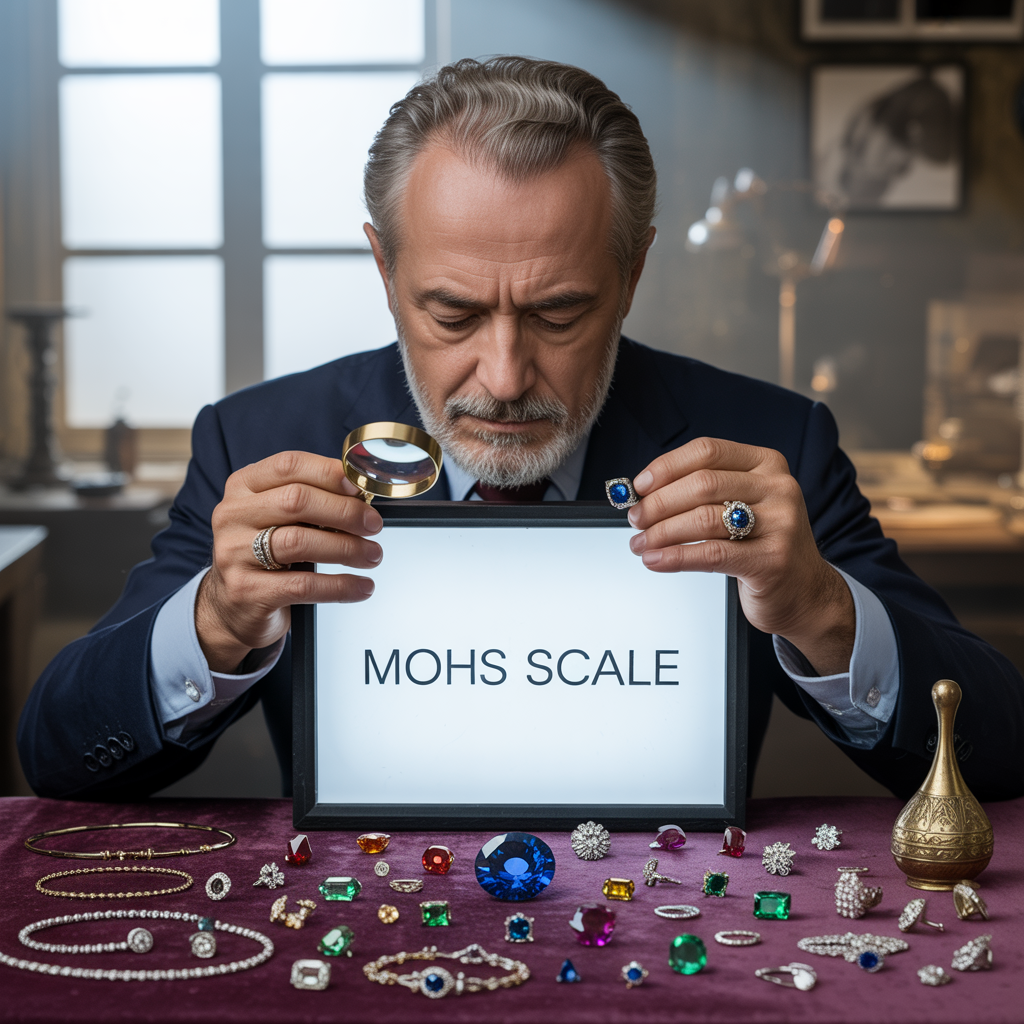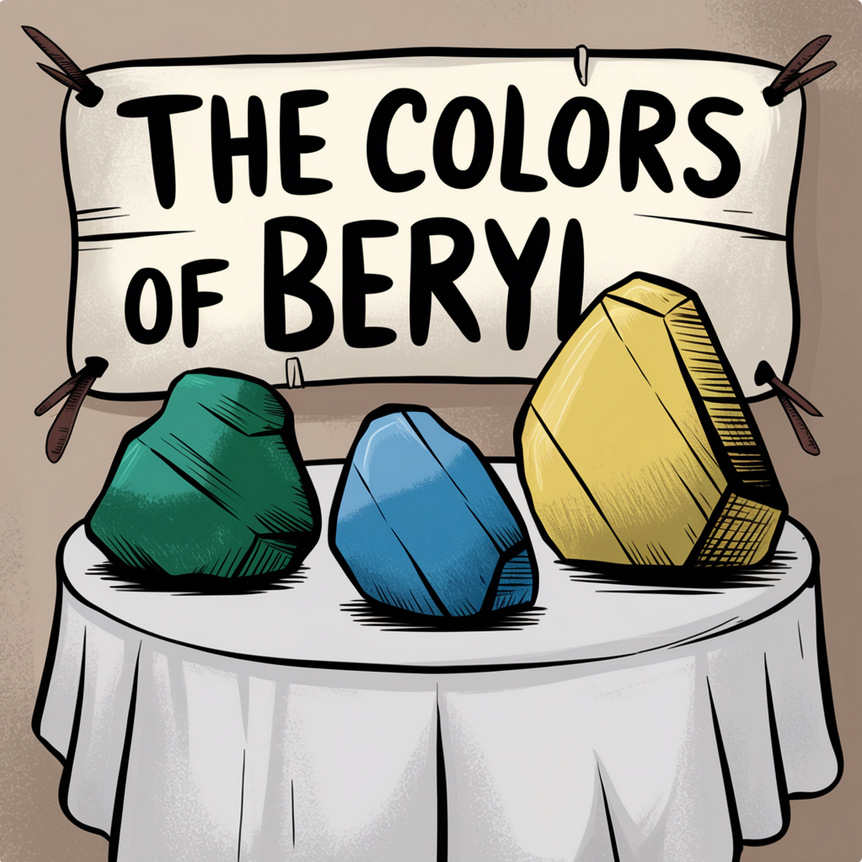Amethyst Gemstones
Ametrine Gemstones
Aquamarine Gems
Alexandrite Gems
Garnet Gems
Amethyst Gemstones
Ametrine Gemstones
Aquamarine Gems
Alexandrite Gems
Garnet Gems
What Types of Gemstones are Beryl?
by Jeff Moriarty October 01, 2018
TRANSCRIPTION
Hi, I'm Steve Moriarty from Moriarty's Gem Art in Crown Point, Indiana. We're also online at moregems.com. I'm here today to talk to you about beryls. The beryls include aquamarine, heliodor, emerald, morganite, and the red beryl bixbite.
I'm gonna start out with aquamarine, the blue form of beryl. Aqua and all the beryls are good, tough stones. They have good hardness, so a very wearable stone, and for us as cutters it's an easy stone to cut and polish. It's just a pleasure to work it. The beryls generally form in these long, hexagonal crystals, as you'll see here in these bigger crystals. These are from Madagascar. The aquamarines, these are from Madagascar, these from Nigeria.
In general, the value of aquamarine is based on how deep the color is. The depth of color determines the price, but there are also secondary colors that can affect the value of a stone. These would generally be grays. All aqua tends to have a little bit of gray to it, the more gray, the less the value. And the yellow color that causes it to be green. Aqua is generally heated to remove the yellow color. In heating, you get rid of the ferric iron that's in aquamarine. Aqua is colored by iron and also has the yellow color, the ferric part of the coloring agent, and that's what we're trying to remove. Occasionally you'll get aquas that have a little bit of green that are very attractive, and we don't heat those. But mostly aqua, to get to the straight blue color, is heated.
As you can see from the crystals we have on display, these crystals from Madagascar were quite large, maybe six inches long. So you do get very large crystals of aquamarines. Because of the shape of the natural crystal, we tend to cut emerald cuts. They can often be long pencil shapes, as you see in some of the pendants we have. The clarity of aqua, we have high expectations for clarity. We generally cut them to be flawless. Occasionally you'll have a minor inclusion in them, but we try to cut very high clarity stones. This pear shape that you see in this video, this was cut from a broken piece of aqua. That's what gives you the unusual shapes. Otherwise, if you have a natural crystal, you get those long emerald cuts.
So the next gem in the beryl family is the most famous and most valued, which is emerald. Emerald started back in Cleopatra's time. The source there produced emerald, but not a very good quality emerald. Columbia, by far, produced some of the biggest and finest emeralds ever to come out of the ground. Two mines were the primary producers, Muzo mine, Chivor, with the Muzo mine being the finest and biggest stones, deeper color. Chivor was generally a lighter color tending towards slightly blue, whereas Muzo was slightly yellow in color. Both those mines produced a large quantity of material and were really the only game for quite some time.
After that, we found material in Brazil. The Brazilian material, very deep color. Lot of issues with clarity, but that's typical of emeralds. But for probably in the '80s or '90s, it was one of the major producers of emerald in the world. About that time we also found emerald in Africa. Zambia produced a huge quantity of material of very deep color, often strongly to the blue, but just very beautiful stones. Then my first tip to Madagascar, I was kind of shocked to see emerald there. I didn't even know that it existed there at the time. I arrived there in early 2000's. But the quality of the emerald there was just amazing and I had to go a local gemologist just to make sure that this stuff was real. Come to find out he pulled out an article from Gems and Gemology of the recent discovery of the material, and I found many, many fine emeralds at that source.
Another new source is in North Carolina. I don't think it's ever gonna be a commercially viable source, but they do produce emeralds here in the United States. The newest source, just in the last year, late 2016, was found in Ethiopia. I bought a stone at Tucson this year and cut it, it's this gem right here.
So this gem weighs a carat 68. Not only does it have beautiful color and appears to be eye clean, this stone has received no treatments. GIA has certified it as a non-treated stone, so no filling with oils, which this is probably the first gem in my entire ... Well, that's not true. I've had gems from Madagascar that aren't treated, but this is one of the few in my entire time in business that is completely untreated, and it does increase the value by 40% to 50% over a treated stone. So Ethiopia is a new source and promises to be one of the most exciting new gem find probably in this decade.
One question I get is, "When is an emerald green beryl?" I think technically green beryl is a gem that's not colored by chromium, which the coloring agent for emerald is chromium. It would generally be a lighter color and no chromium present in the gem would pretty much categorize it as green beryl. These lighter-color crystals that are here, they actually are colored by chromium but some people might want to say that it's green beryl because it's not a rich enough color to be categorized as emerald.
This is an emerald crystal that I also bought in Madagascar. The Madagascar emeralds come from a place, [Irandru 00:07:17] is the source. They really do produce some great stones, and like I said, it is a place that I've found natural colored emeralds because at the time I was buying there, they had no ability to treat their stones. When I'd buy, they would be sticky and just covered with actually honey is what they used to make the stones look better. They didn't use oil, they used honey because it was what was available to them.
So the next gem in the beryl family would be heliodor, or golden beryl, yellow beryl. Heliodor translates as "gift of the sun" because of its yellow color. The desirability of the color is greater when it's a pure yellow, it'll tend to be golden yellow, and then its less-valued colors will be greenish-yellow. Heliodor often is irradiated the color. Most of the material on the market is irradiated. These stones that we see here, they also are irradiated the color. Very difficult to identify whether they're treated or not. The only stones that I know definitely that weren't treated that I've bought over the years were from Madagascar. Again, the market was so new that they did not have the ability to irradiate. This was in late 1990's, early 2000's. Today you can't be sure of it because you can ship to somebody, they can irradiate and ship it back. You're never sure about irradiation because it's a very difficult identification for irradiation, so most stones we assume are irradiated. The irradiation uses a crystal that's either light blue or colorless beryl and it irradiates to this yellow color.
Like aquamarine, heliodor comes in larger sizes. You'll find it cut in similar shapes. The clarity is typically high on it, although the expectations are not for flawless like it is in aqua. When it comes to value, because of the yellow color being a little less desirable than the other colors of beryls, heliodor is at a lower price range than aqua or emerald, of course, or bixbite or morganite.
The next gem in the beryl family would be morganite, this large stone which is probably the finest morganite, the deepest color anyway, that I've ever seen. This material, which is real common on the market right now because they've taken a light, colorless beryl and irradiated it, most of it coming from Mozambique as well. This material right here is also irradiated. Recently we've cut a few gems that are completely natural, and those are coming out of Nigeria. They'll be from pink to peach, whereas most of the irradiated material currently on the market is this peach color. That's what tends to be produced rather than the pink.
So it's an interesting story about morganite, the discovery and how it got named. At the time Kunz was the head gemologist at Tiffany and Company, and his friend and probably a big purchaser was JP Morgan. Kunz had promised JP Morgan that he would name a gem after him. So along comes pink spodumene, and, looking for a name, Kunz decided, "JP Morgan? Oh no, I think kunzite would be a proper name for it." So he kind of left JP Morgan out, so the next gem that come along, JP Morgan got his name used for morganite.
One other gem in the beryl family that we don't have is bixbite, which is the red beryl. It's very expensive, very rare, so I don't currently have it. I had a chance back in the early '80s, 1981. I did the show in Tucson and across from me was the owner of the bixbite mine, which is in the Wah Wah Mountains in Utah, and he at that time offered to let me mine for him because he was in his 70s and he needed to mine to keep his license with the government. But of course I had a family and couldn't do it, but I do wish I'd had the time to mine that. But the mining is in very hard rock, they use explosives, but it is a beautiful gem.
So one final gem in the beryl family that's barely worth mentioning is colorless or goshenite, and I say "barely worth mentioning" because due to the low refractive index of beryl, it doesn't produce a really bright gem. Goshenite rarely comes as a beautiful, brilliant, colorless gem like you would see in zircon or diamond.
I'd like to thank you for watching. If you have any questions about beryls or any other gems, leave them in the comment section below. You can visit us at Moriarty's Gem Art, we're on the square in Crown Point, Indiana, or online at moregems.com.
Jeff Moriarty
Jeff Moriarty has been in the jewelry industry for almost 20 years. His family now only owns a retail jewelry store in Crown Point, Indiana, but he also travels the world with his father in search of rare gemstones.
Leave a comment
Comments will be approved before showing up.
Also in Jewelry, Gemstones, News and Cool Stuff

Ruby vs. Garnet: How to Tell the Difference Between These Red Gemstones
by Jeff Moriarty July 17, 2025
Read More
The Truth About Gemstone Hardness and Durability: What High-End Buyers Need to Know
by Jeff Moriarty July 16, 2025
Read MoreSubscribe
Sign up to get the latest on sales, new releases and more …



